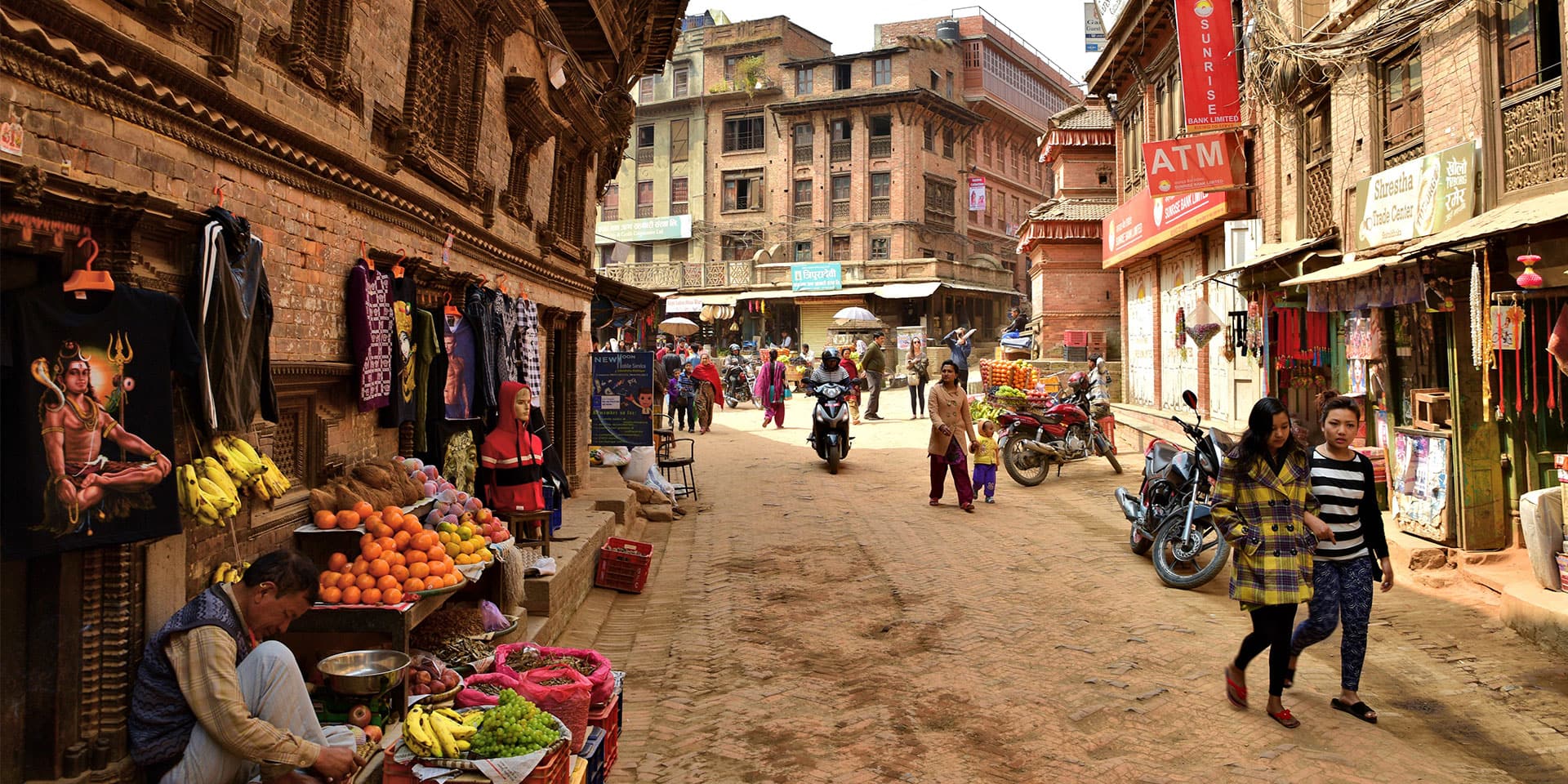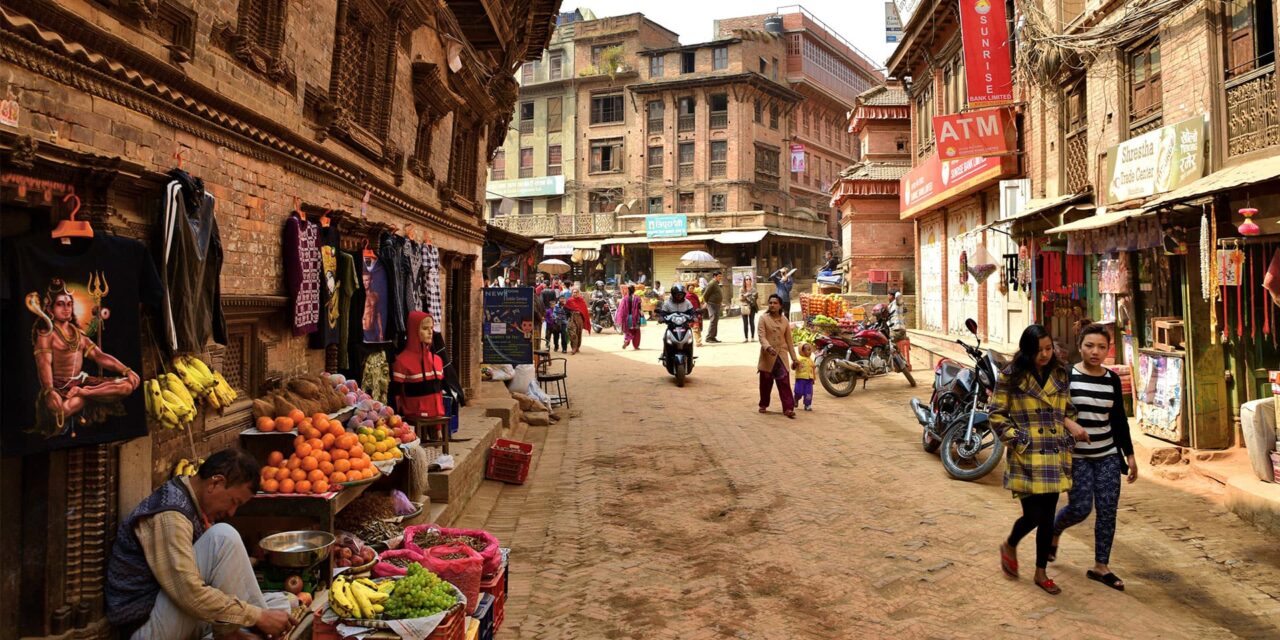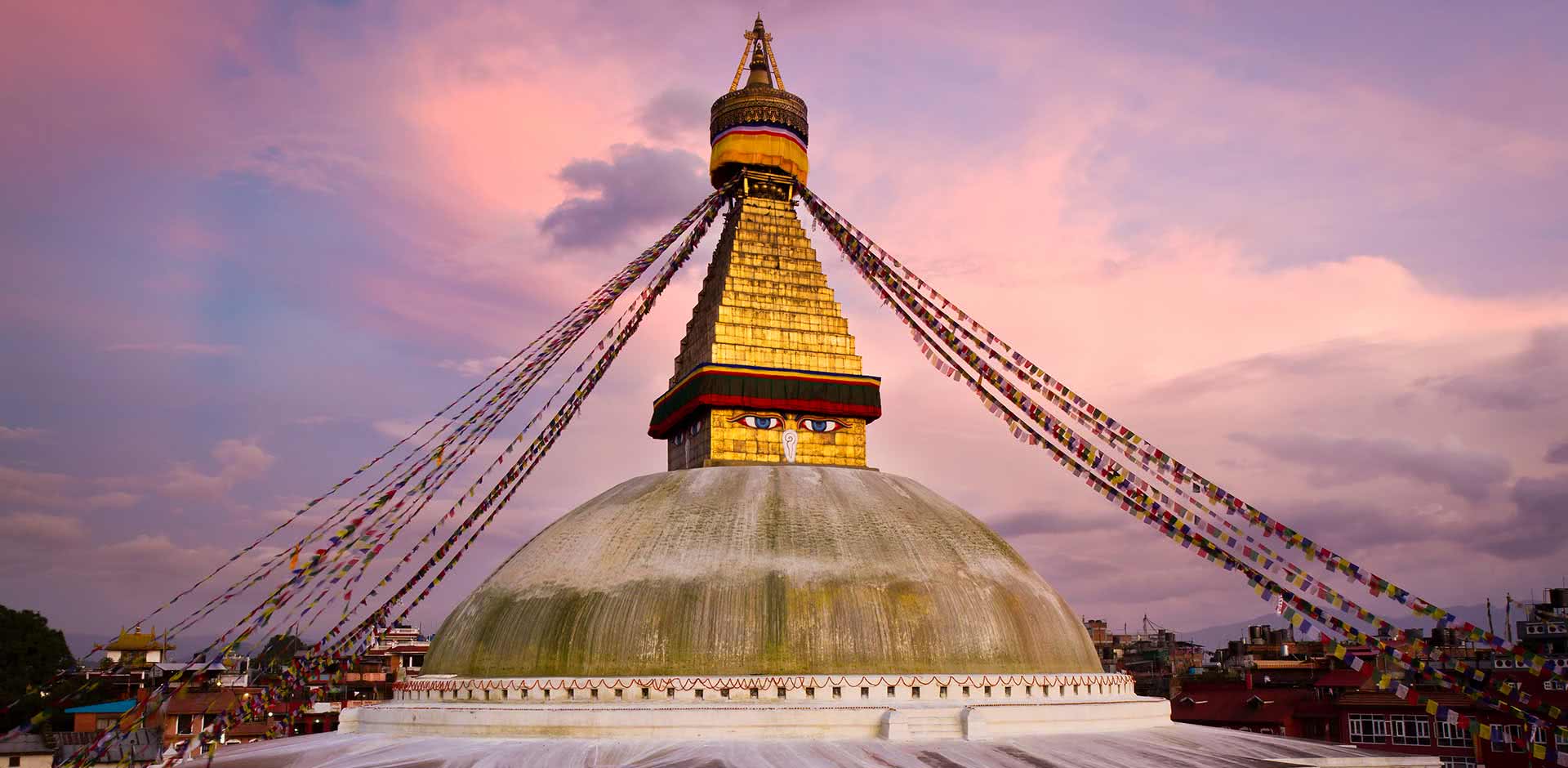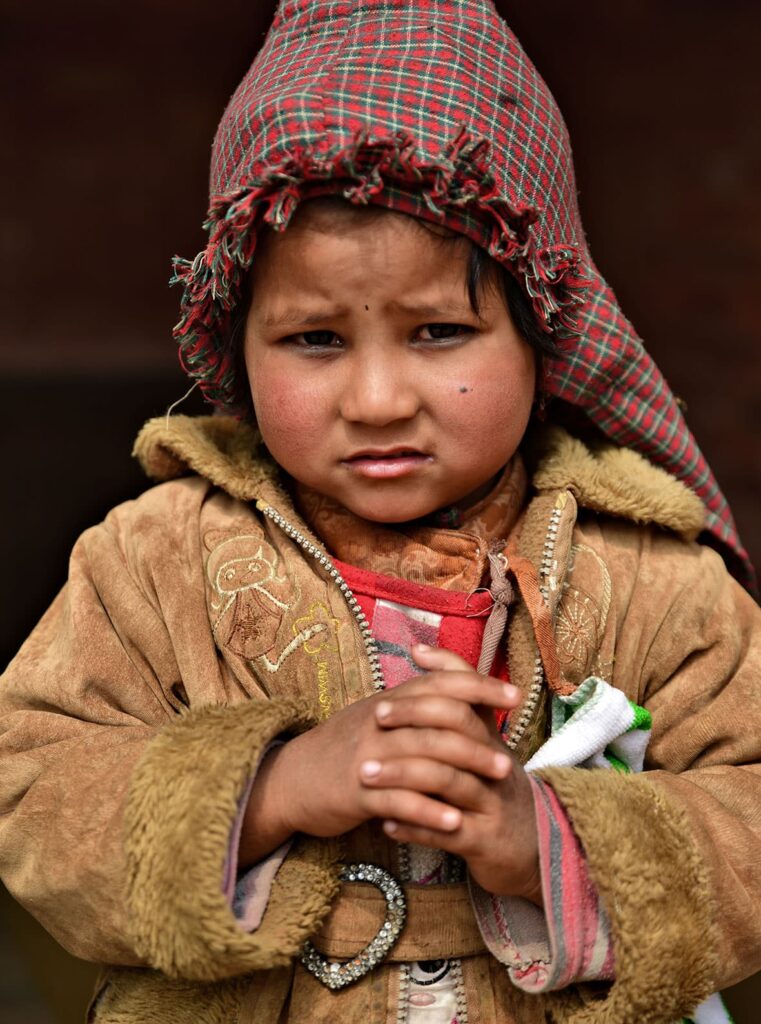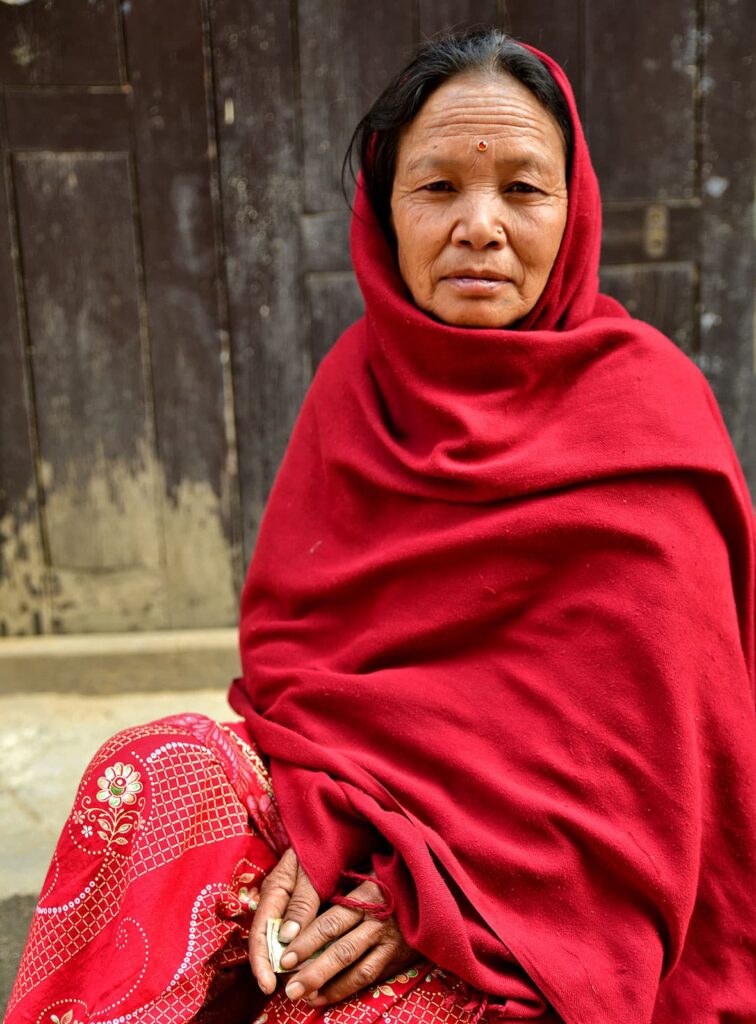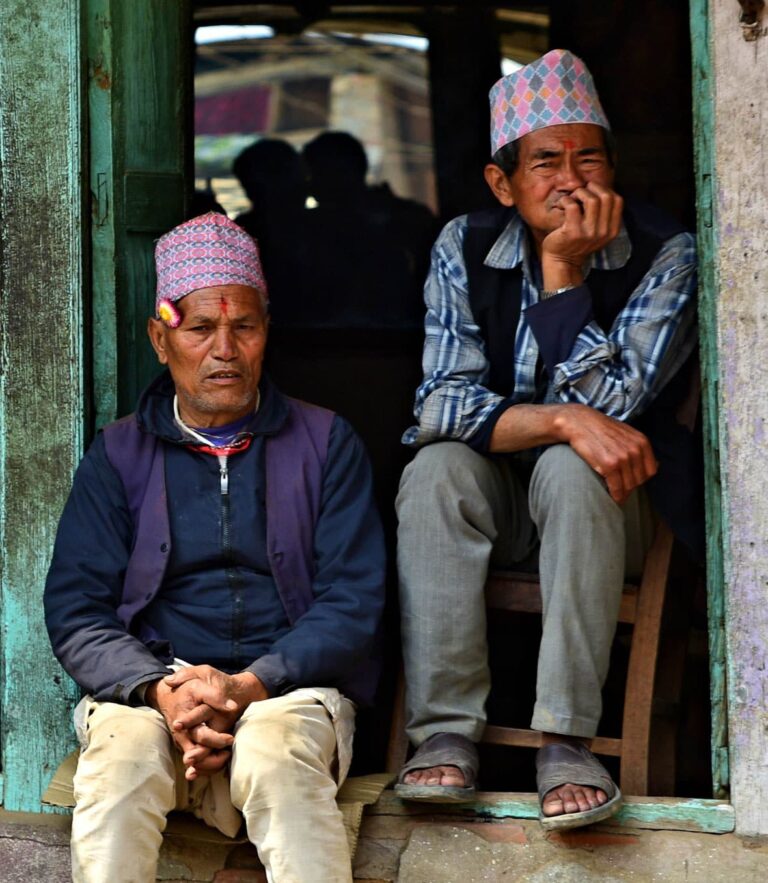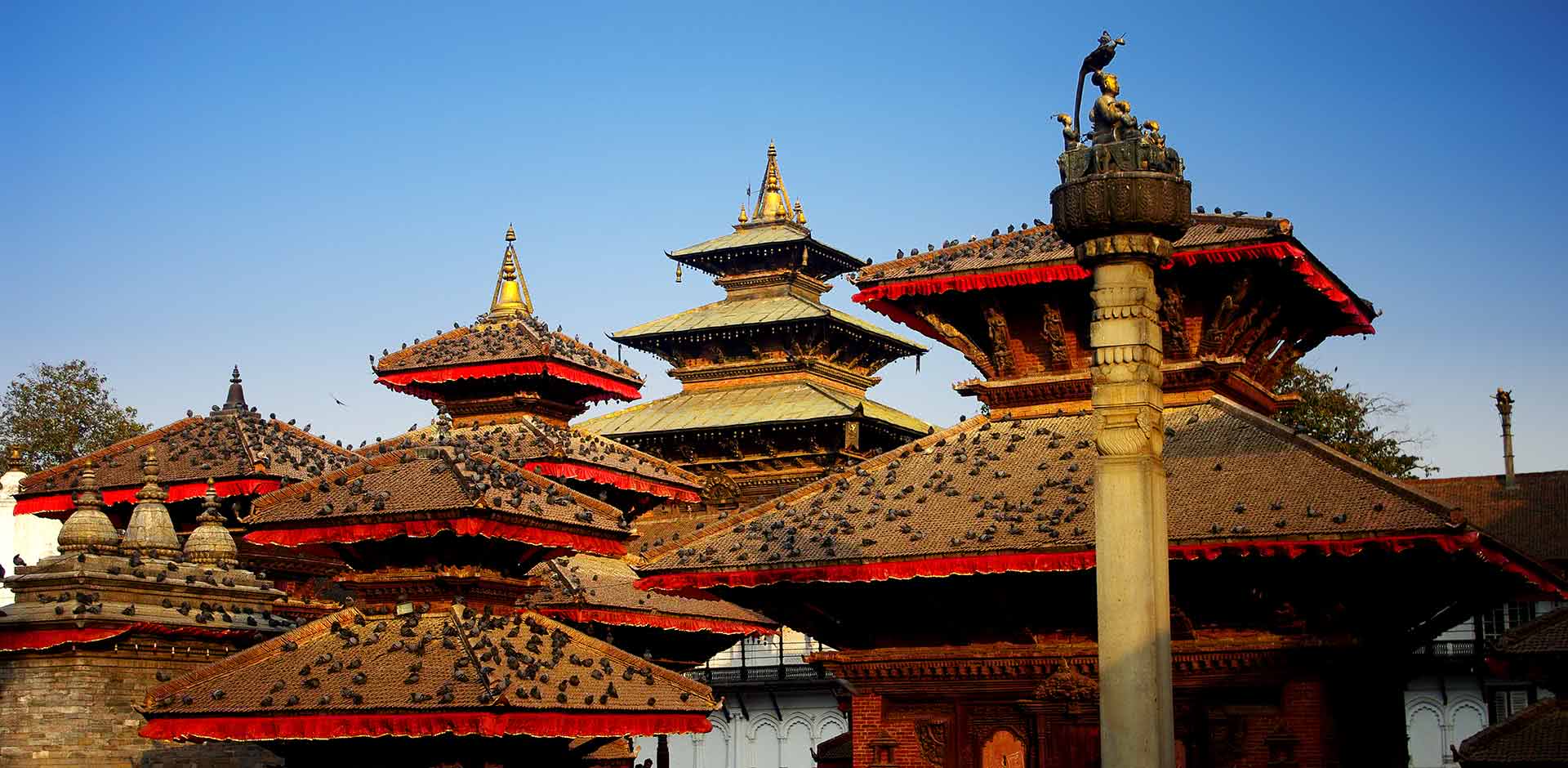By far the country’s largest city, Kathmandu is also the only Nepalese metropolis well known around the world. The planet’s highest mountain range is also Nepal’s greatest drawcard and, as the home of the country’s only proper international airport, Kathmandu is the gateway to this trekking heaven. For tourists who want more from Nepal than just mountains, who seek to immerse themselves in its heritage and customs, Bhaktapur is unmissable.
Of all of the cities in Nepal, this is the one which gives visitors the closest possible experience of how the country looked in the Middle Ages. The historic treasures of the nation are hidden in plain sight in Kathmandu’s low-profile sister city. Former national capital. UNESCO heritage site. Artistic hub of the country. Nepal’s best-preserved ancient settlement. Home of one of the nation’s most splendid palaces. There is a great deal hiding in Bhaktapur.
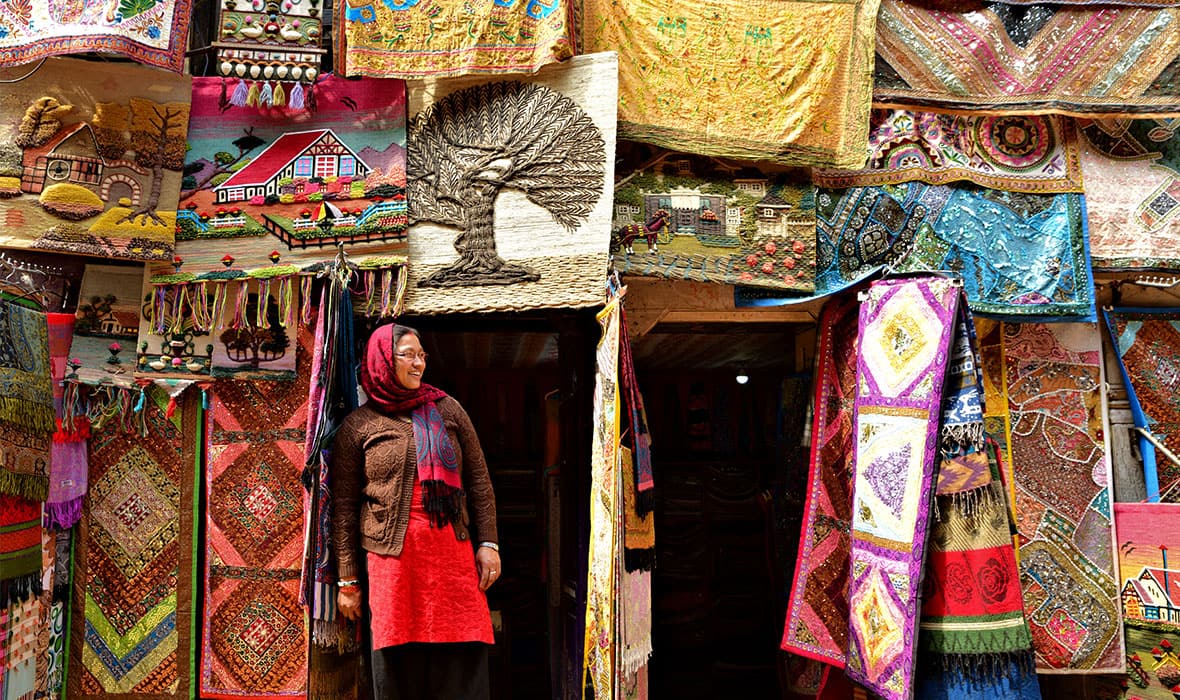
ABOVE: Vendor at her shop in Bhaktapur.
Located 15km east of Kathmandu, this small urban centre of about 80,000 people began as a separate city. These days the urban sprawl of the capital has made Bhaktapur essentially an outer suburb of Kathmandu. I don’t often visit outer suburbs when travelling. But in this case I made an exception and was duly rewarded. Bhaktapur is unique and spectacular, even in the wake of the devastating earthquake of April 25, 2015. After the ground finished convulsing that day, more than 8,000 lives were lost, and about 20 percent of buildings in Bhaktapur were either destroyed or badly damaged.
More than three years on the reconstruction efforts continue. The Nepalese Government is determined to rebuild all of the historic structures which were affected, enlisting hundreds of traditional artisans. I met several of the woodworkers and stonemasons who had been tasked with restoring the glory of Bhaktapur. The reason that the Government had to call upon these niche craftsmen is due to the unique architecture of the buildings in this city.
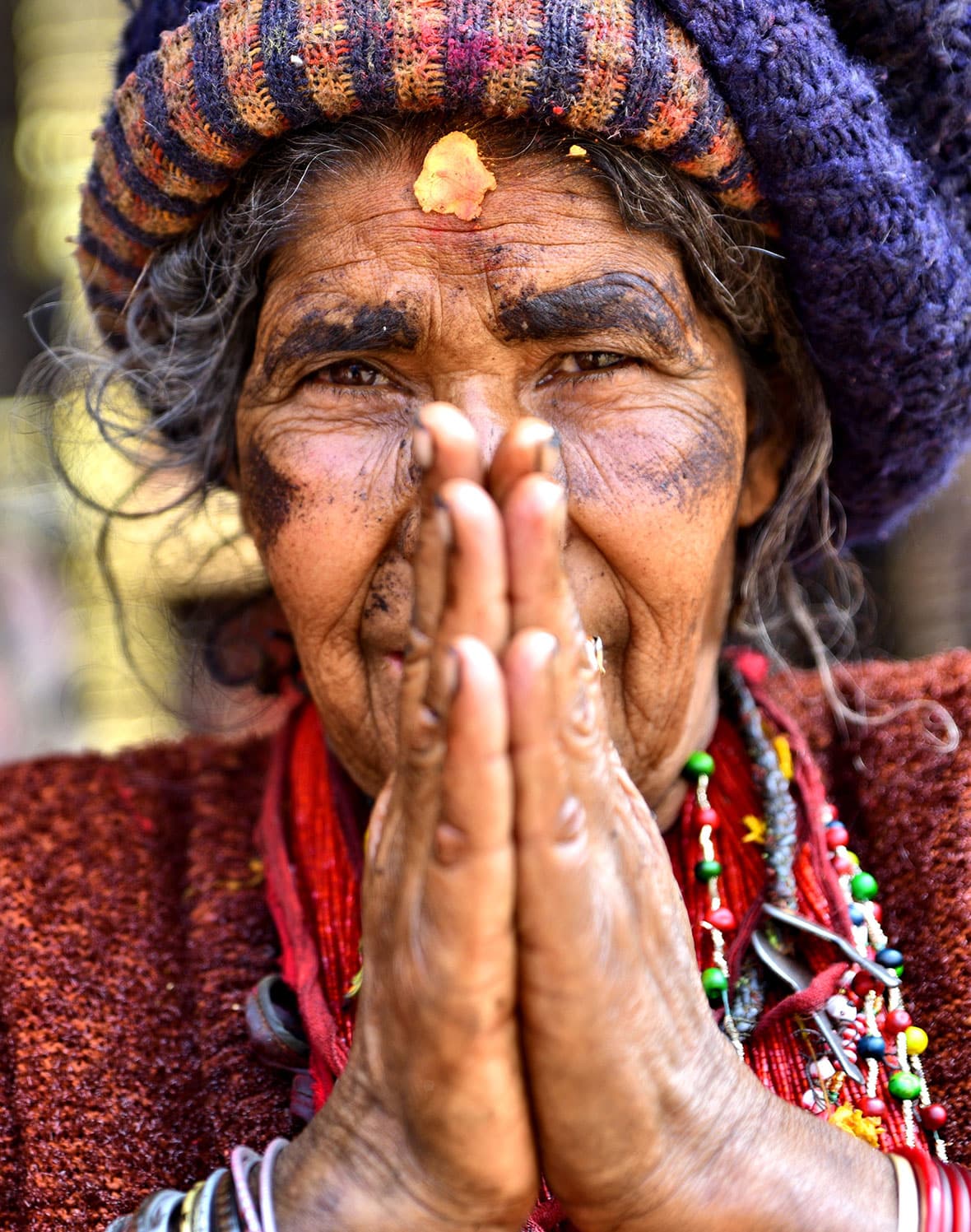
ABOVE: Local Bhaktapur woman.
This labyrinthine settlement is embellished by timber and stone structures unique to Nepal, each decorated by remarkably-intricate carvings and latticework. Bhaktapur boasts several impressive gates, a clutch of significant temples, a distinctive royal palace, several beautiful museums, and, at the heart of it all, the magnificent Durbar Square.
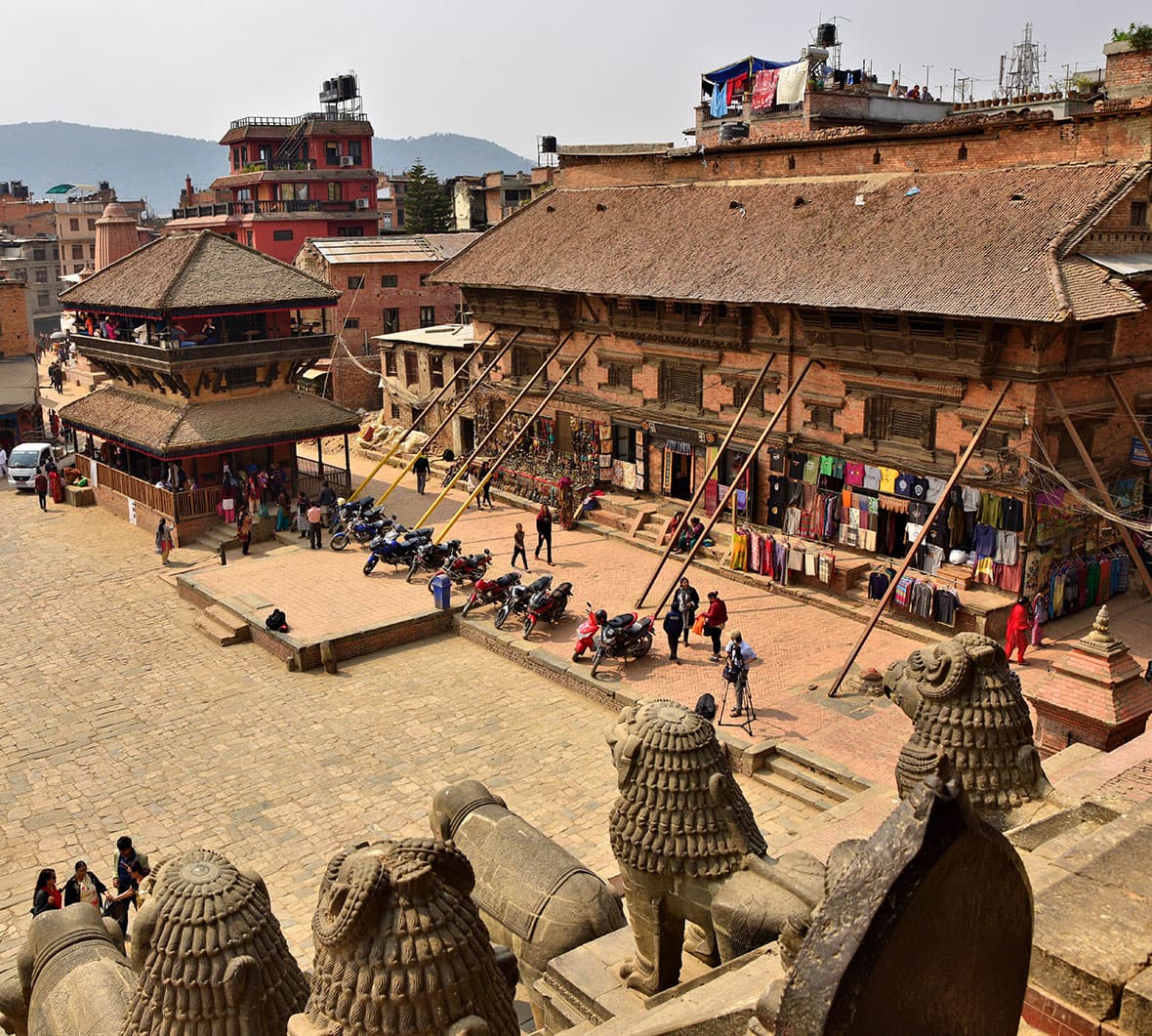
ABOVE: Ubiquitous motorbikes parked outside of architectural wonders.
This public meeting place has long been the hub of Bhaktapur, which was first settled more than 1,000 years ago. It was the capital of the Kathmandu Valley until 1482 when King Yaksha Malla decided to break the kingdom into three, gifting one area to each of his sons, a move which weakened the kingdom and led to it being overrun by the Indian Shah Dynasty. The valley became part of the mighty Gorkham Kingdom and it was during this period, which extended for more than 200 years up to 1768, that many of the beautiful buildings around me here in Bhaktapur were built.
ABOVE: Faces of the diverse population of Bhaktapur.
None of these timeworn structures stands out more than the Palace of 55 Windows. Constructed in 1700 as a royal compound it is, as its name suggests, decorated by dozens of timber-framed windows, each embellished with ornate carvings. These days it houses the National Art Gallery, a museum which showcases Hindu cloth paintings and ancient manuscripts. This is one of three museums in Bhaktapur along with the Woodcarving Museum and the Brass and Bronze Museum, the latter of which is based in a historic building – the former home of a Hindu priest.
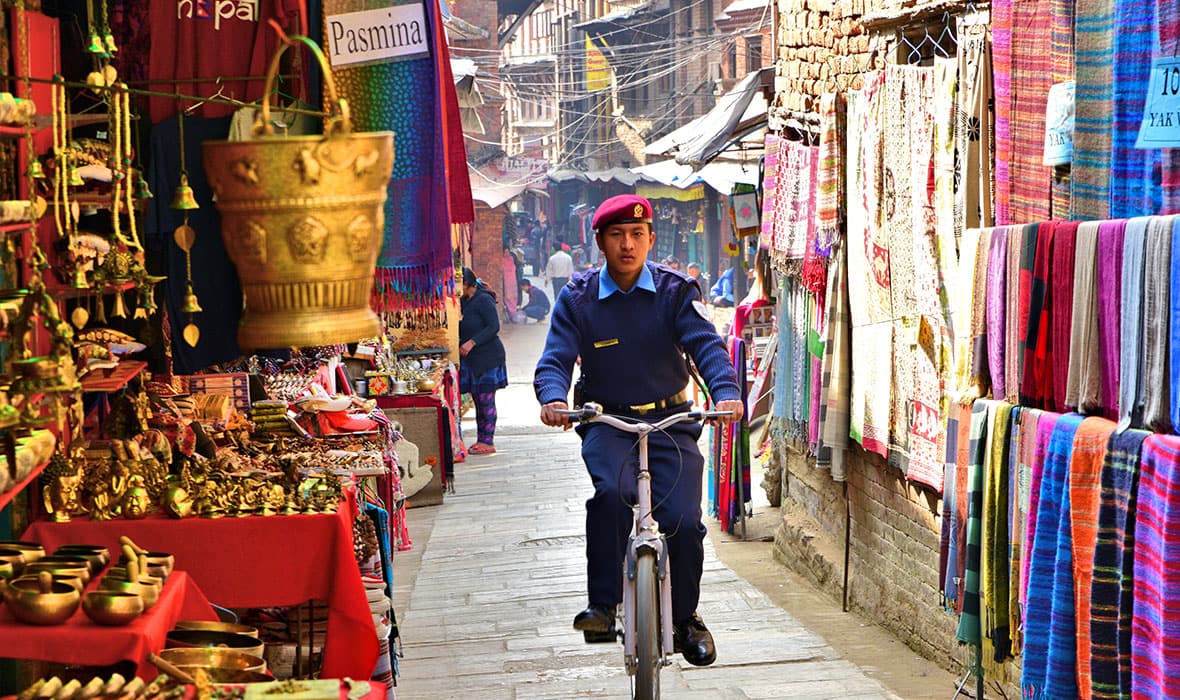
ABOVE: Police officer rides a bike through the colorful markets of Bhaktapur.
Quite miraculously, the palace was not badly damaged by the 2015 earthquake. Neither was the tallest ancient structure in this area, the nearby Nyatapola Temple. This 30m-tall five-tiered Hindu Pagoda, built in 1702, looms high above Bhaktapur. Protected by stone statues of lions, elephants and goddesses, this temple was dedicated to Siddhi Lakshmi, a manifestation of the Hindu warrior goddess Durga. The level of complex craftsmanship which went into the construction of this pagoda is extraordinary, exemplified by the sophisticated patterns of its more than 100 carved wooden roof struts.
Visitors are permitted to climb the temple’s narrow staircase, near the top of which is a concealed idol of Lakshmi reputedly so menacing it can be viewed only by monks. Fortunately, there is no such restriction on tourists absorbing the stunning view from the top of the pagoda. After hours of scurrying around Bhaktapur, eagerly inspecting its historic wares, it was this lofty vantage point that finally lulled me. For 15 minutes I stood looking out across Durbar Square, a place which, earthquake damage aside, seems not to have been altered in centuries. With the Himalayas standing guard in the background, it hopefully won’t be changed for centuries more. Bhaktapur is Nepal as it once was.

